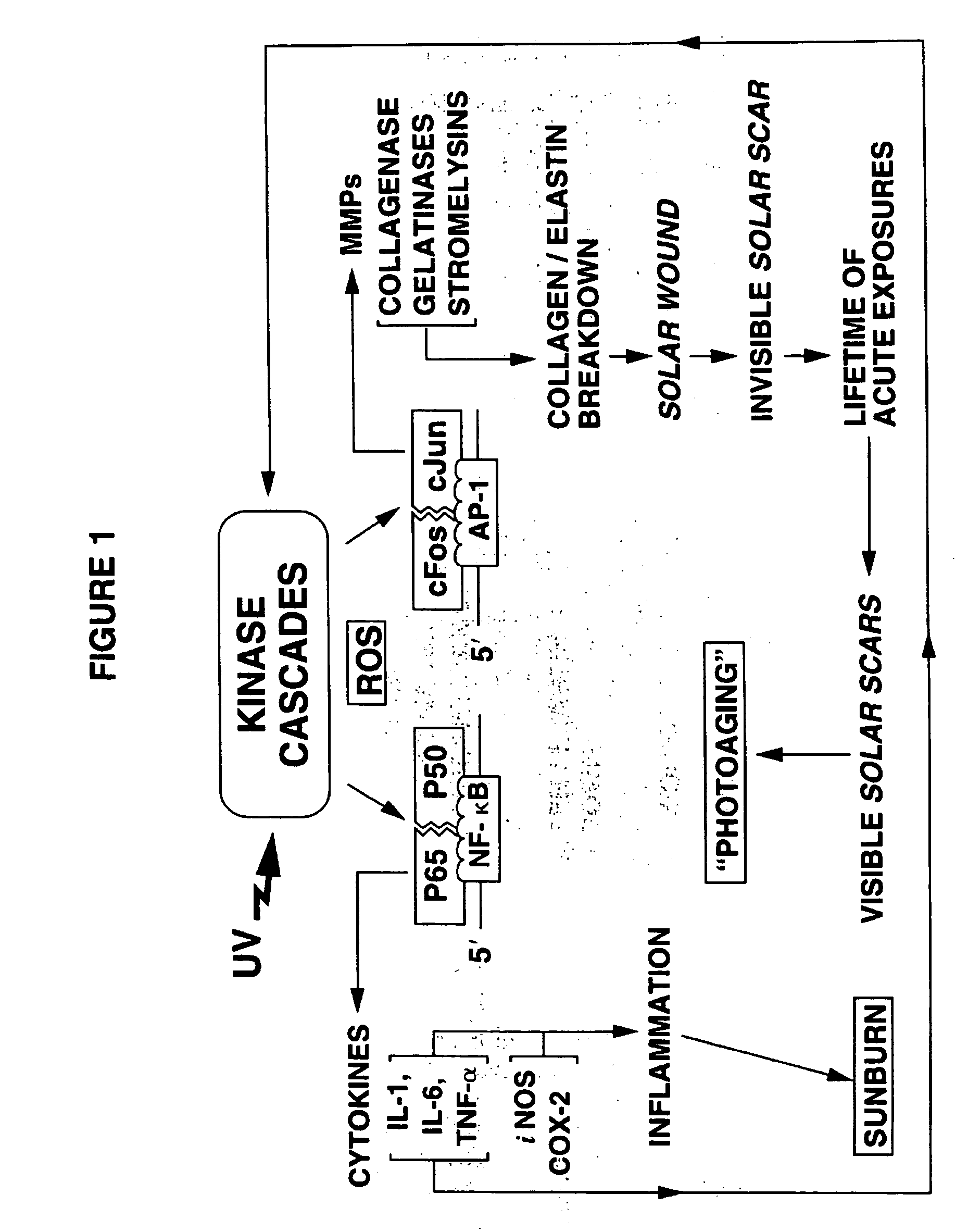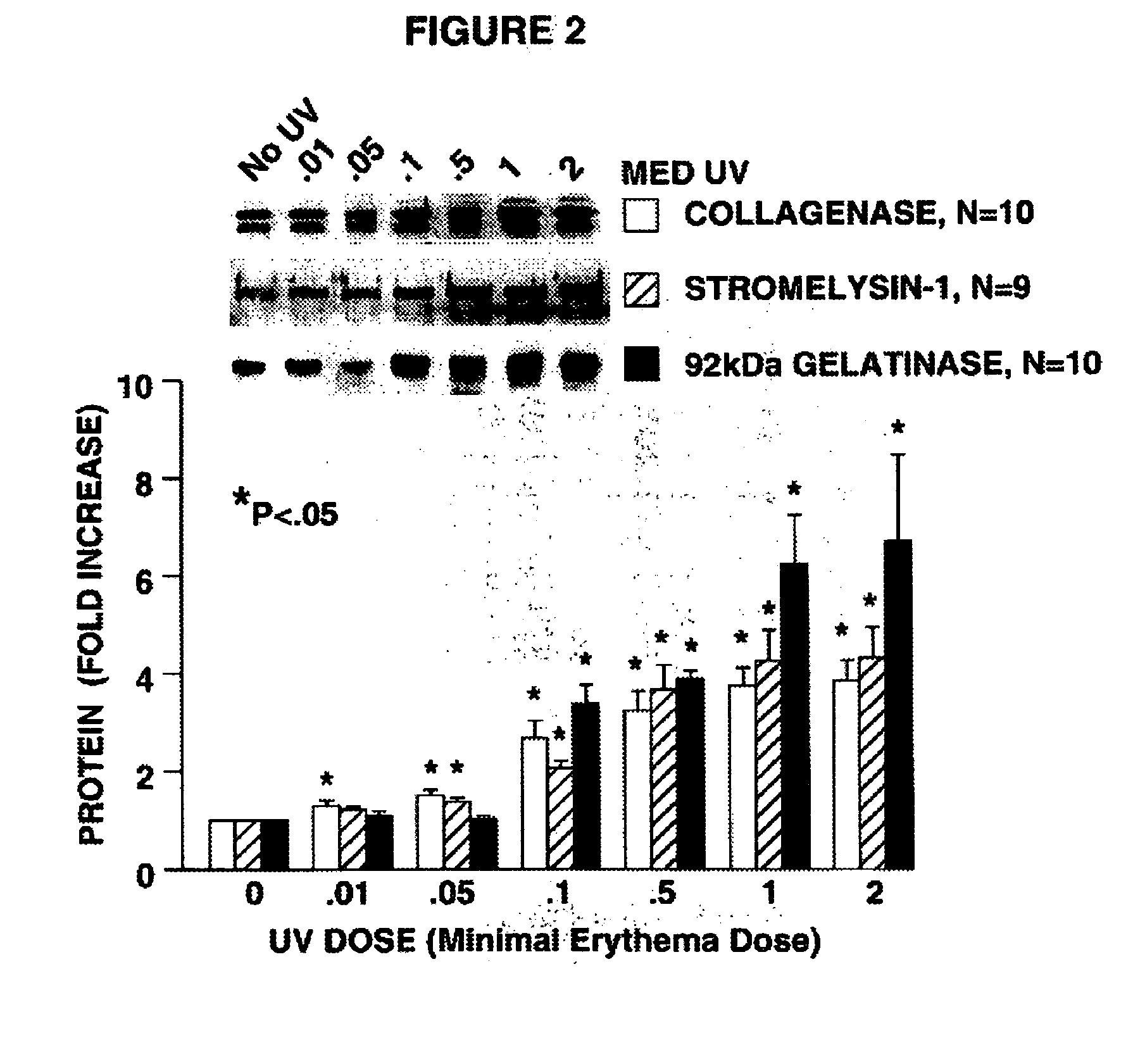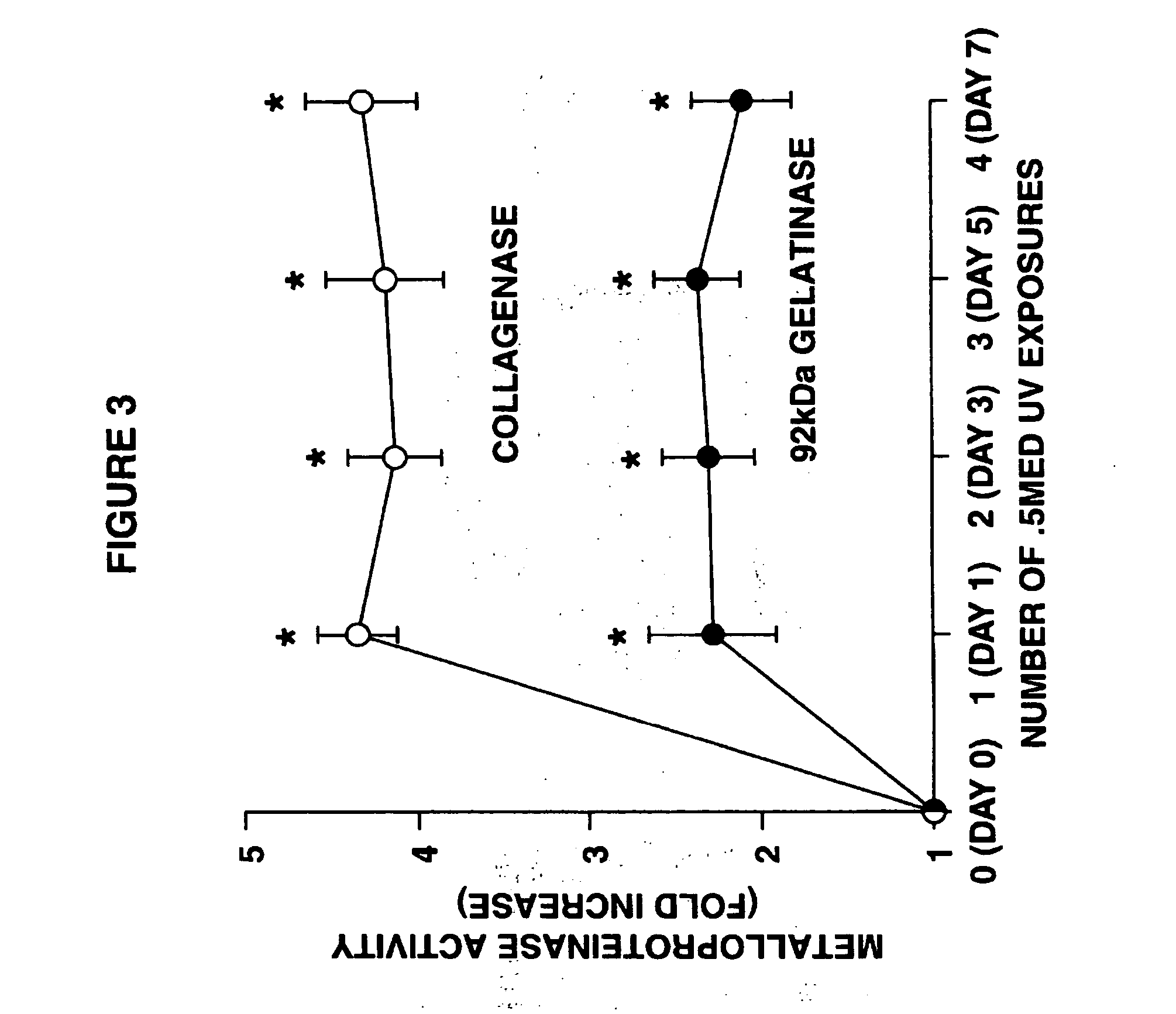Methods for inhibiting photoaging of human skin using orally-administered agent
a technology of photoaging and orally administered agents, which is applied in the direction of pharmaceutical active ingredients, pharmaceutical delivery mechanisms, toilet preparations, etc., can solve the problems of significant damage to the skin and reduce the concentration of mmps in uv-exposed human skin, and achieve the effect of preventing photodamag
- Summary
- Abstract
- Description
- Claims
- Application Information
AI Technical Summary
Benefits of technology
Problems solved by technology
Method used
Image
Examples
example 1
Suberythemal Induction of AP-1
[0073] Nine caucasian adults were exposed on their buttocks region (i.e., skin normally not exposed to sunlight) to the UV radiation from the aforedescribed set of bulbs for various times, after which-tissue samples were taken and analyzed. As shown in FIGS. 2 and 3, and using the aforementioned time of 2 minutes and 40 seconds (160 s) as one MED, various portions of these volunteers' skin were exposed to 0, 0.01, 0.05, 0.1, 0.5, 1, and 2 MED of bulb radiation. The biopsied dermal tissue samples from exposed (and 0 MED, unexposed) skin were assayed for the presence of AP-1 and the fold increase of binding to DNA encoding AP-1. As described by Angel, P., et al., Cell (1987) 49:729-739 and Sato, H. and Seiki, M., Oncogene (1993) 8:395-405, the production of certain MMPs is mediated by the transcription factor AP-1.
[0074] The results of the biopsies shown in these figures are startling. At suberythemal doses down to about at least 0.01 MED, AP-1 is induc...
example 2
Retinoid Prophylaxis of Suberythemal Collagenase Induction
[0075] As described in our copending application Ser. No. 588,771 (referred to above and incorporated herein by reference) it has been shown that retinoids inhibit the induction of various MMPS, including collagenases, after erythemal doses of radiation.
[0076] Using the buttocks skin of ten volunteers, following the same general procedure as described above, each of these volunteers was pretreated with the standard vehicle alone, with 0.1% retinoic acid (RA), or with 1% retinol (ROL). Tissue samples from these volunteers were biopsied following pretreatment and after no exposure and after exposure to 0.5 MED from the set of four bulbs.
[0077] The results of these biopsies are shown in FIG. 13B, which depicts the pretreatment and exposure regime to the fold increase of type I collagenase in vivo for the ten volunteers. As shown by the results in this figure, pretreatment of human skin with a retinoid can inhibit suberythemal...
example 3
Effect of UV Exposure After Topical Pretreatment I
[0079] Melatonin is a hormone apparently mediated by the light-dark cycle of day-night. It has been proposed recently that melatonin might act as an antioxidant.
[0080] We evaluated six volunteers to determine the effect, if any, of topical melatonin on UV-induced erythema using the same general procedure as described. The various UV dose exposures and the erythematic response of each of these volunteers after a five (5) minute exposure is depicted in FIG. 9. The previously unexposed skin of each of these volunteers was pretreated with the standard vehicle alone or with 5% melatonin. The results in FIG. 9 show that after exposure to two (2) MED, erythema was induced in vehicle-treated skin and was not induced in melatonin-treated skin. Even when erythema was induced in melatonin-treated skin, it was present to a significantly lesser degree than in vechicle-treated UV-irradiated skin. Nevertheless, it should be kept in mind, as shown...
PUM
| Property | Measurement | Unit |
|---|---|---|
| time | aaaaa | aaaaa |
| time | aaaaa | aaaaa |
| time | aaaaa | aaaaa |
Abstract
Description
Claims
Application Information
 Login to View More
Login to View More - R&D
- Intellectual Property
- Life Sciences
- Materials
- Tech Scout
- Unparalleled Data Quality
- Higher Quality Content
- 60% Fewer Hallucinations
Browse by: Latest US Patents, China's latest patents, Technical Efficacy Thesaurus, Application Domain, Technology Topic, Popular Technical Reports.
© 2025 PatSnap. All rights reserved.Legal|Privacy policy|Modern Slavery Act Transparency Statement|Sitemap|About US| Contact US: help@patsnap.com



